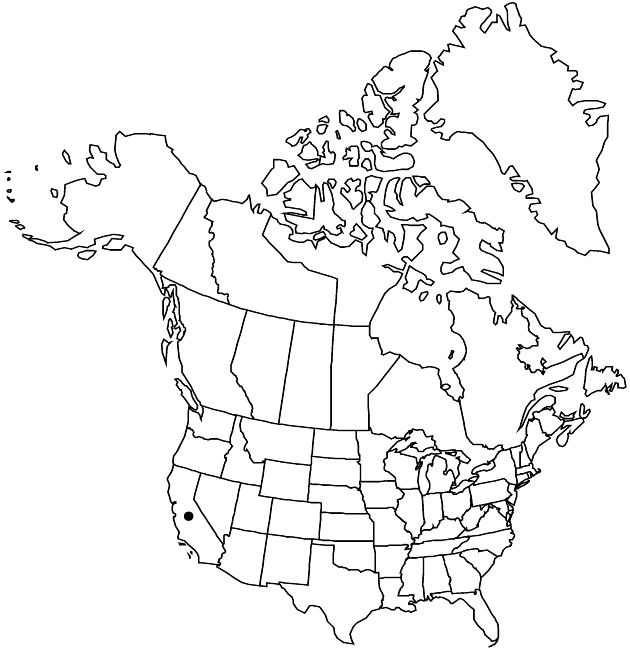Stylocline masonii
Madroño 39: 117, fig. 1. 1992.
Plants 1–7 (–10) cm. Leaves blunt, not mucronate, longest 5–9 mm; largest capitular leaves linear-oblong to narrowly elliptic, 2–5 × ± 1 mm. Heads in dichasiform or proximally racemiform arrays, ± ellipsoid, largest 2–5 × 1.5–2.5 mm, thinly lanuginose. Phyllaries 0, vestigial, or falling, ± subulate, mostly 0.1–0.5 mm, unequal. Receptacles ± cylindric, 2–3 mm, heights 5–8 times diams.; scars concentrated proximally and distally, raised, peglike. Pistillate paleae: longest 2–2.7 mm, winged distally; wings oblanceolate to oblacrimate, widest in distal 1/3 of palea lengths; bodies cartilaginous; outermost paleae open, concave. Functionally staminate florets 2–4; ovaries vestigial, 0–0.1 mm; corollas 0.8–1.1 mm (lobes usually 4). Cypselae 0.7–1 mm, obcompressed; pappi: staminate 0 or of 1 smooth bristle 0.7–1 mm.
Phenology: Flowering and fruiting late Mar–early Jun.
Habitat: Open, loose, sandy soils, usually in dry washes
Elevation: 100–1200 m
Discussion
Of conservation concern.
Stylocline masonii is known from the southern San Joaquin Valley and adjacent mountains of Kern, Los Angeles, Monterey, and San Luis Obispo counties. Reportedly, it is in identifiable condition for only 2–4 weeks in wet years. On average, it is the least conspicuous Stylocline.
Stylocline masonii is sister to, and largely allopatric with, S. psilocarphoides (J. D. Morefield 1992), from which it remains distinct when sympatric (T. S. Ross and S. Boyd 1996).
Selected References
None.
Lower Taxa
"broader" is not a number."longest" is not a number.
